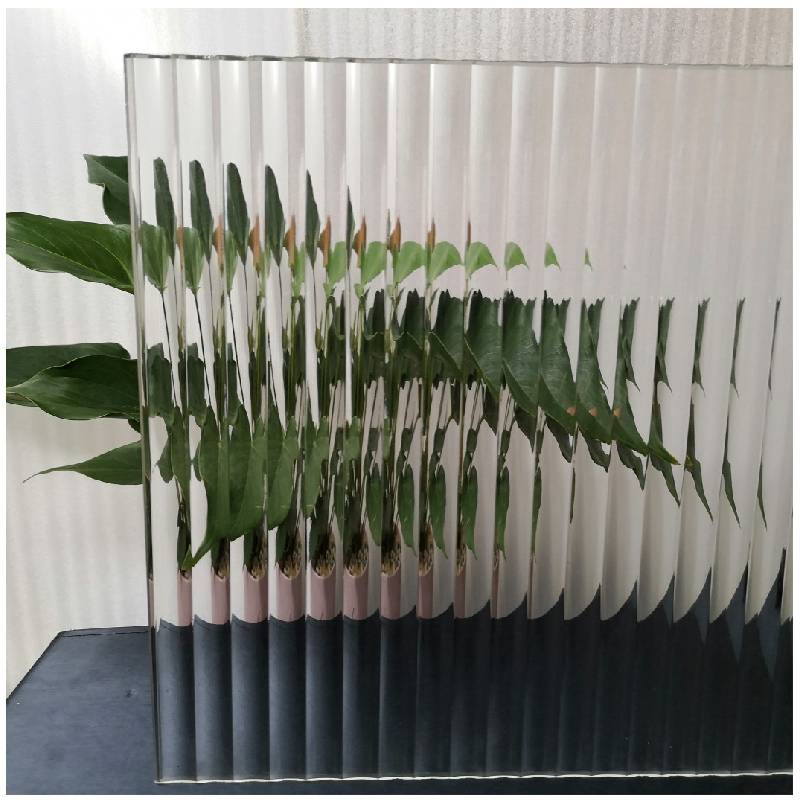The Fascinating World of One-Way Mirror Glass
One-way mirror glass, often referred to simply as mirror glass, presents a uniquely intriguing optical phenomenon that blurs the line between transparency and reflectivity. This specialized glass has captured the imagination of architects, security professionals, and artists alike, thanks to its striking dual functionalities. As a medium that serves both as a mirror and as a window, one-way mirror glass plays an important role in a variety of application areas, offering privacy, ambiance, and aesthetic appeal.
At its core, one-way mirror glass is designed to reflect light on one side while allowing visibility from the other. This effect is achieved through a special coating—usually thin layers of metal such as aluminum—applied to a standard plate glass. The crucial element in its functionality is the difference in lighting levels between the two sides. For this phenomenon to work effectively, the side intended for reflection must be significantly more illuminated than the side designated for viewing. This interplay of light creates the illusion of a solid mirror on one side while granting a clear view from the other.
The Fascinating World of One-Way Mirror Glass
The architectural realm has also embraced one-way mirror glass for its ability to enhance natural light while providing privacy. In modern buildings, particularly offices and residential spaces, one-way mirrors can transform ordinary walls and windows into extraordinary features. They allow occupants to enjoy expansive views of their surroundings while preserving their privacy from the outside world. For instance, a room lined with one-way mirror glass can create a soothing ambiance, flooding the interior with light during the day while preventing outsiders from peering in.
mirror one way glass
In addition to practical applications, one-way mirror glass has found a place in art and design. Artists experiment with this material to create thought-provoking installations that challenge perceptions of reality and observation. One such famous piece is The Obliteration Room by Yayoi Kusama, where viewers are invited to cover a completely white room with colorful dot stickers. The interaction creates a playful yet contemplative space, and the reflections in the glass can amplify the experience.
However, the use of one-way mirror glass is not without its criticisms and ethical considerations. While it provides anonymity and privacy, its application in surveillance raises questions about consent and the potential for abuse. In public spaces and sensitive environments, transparency becomes a concern; how much do individuals truly understand about their right to privacy when they are unaware that they are being watched? This dilemma necessitates a careful balance between the benefits of surveillance and the imperative for ethical practices in various settings.
Moreover, the lighting conditions required for effective operation—highly illuminated on one side—can limit where and how one-way mirrors are installed. For example, in darker environments, the effectiveness of the mirror can diminish dramatically, compromising its utility. Designers and architects must be acutely aware of these limitations when incorporating such materials into their projects.
In conclusion, one-way mirror glass is a remarkable material that serves myriad purposes—from psychological research to innovative architectural design. Its ability to blend reflection and transparency offers both practical benefits and artistic opportunities, undoubtedly enriching the environments in which it is employed. Nevertheless, the ethical dimensions of its use must be rigorously considered, ensuring that while we appreciate its aesthetic and functional potential, we do not overlook the fundamental rights of individuals. The dual nature of this glass mirrors the complexities of human interaction, prompting us to ponder the fine line between observation and invasion.
 Afrikaans
Afrikaans  Albanian
Albanian  Amharic
Amharic  Arabic
Arabic  Armenian
Armenian  Azerbaijani
Azerbaijani  Basque
Basque  Belarusian
Belarusian  Bengali
Bengali  Bosnian
Bosnian  Bulgarian
Bulgarian  Catalan
Catalan  Cebuano
Cebuano  Corsican
Corsican  Croatian
Croatian  Czech
Czech  Danish
Danish  Dutch
Dutch  English
English  Esperanto
Esperanto  Estonian
Estonian  Finnish
Finnish  French
French  Frisian
Frisian  Galician
Galician  Georgian
Georgian  German
German  Greek
Greek  Gujarati
Gujarati  Haitian Creole
Haitian Creole  hausa
hausa  hawaiian
hawaiian  Hebrew
Hebrew  Hindi
Hindi  Miao
Miao  Hungarian
Hungarian  Icelandic
Icelandic  igbo
igbo  Indonesian
Indonesian  irish
irish  Italian
Italian  Japanese
Japanese  Javanese
Javanese  Kannada
Kannada  kazakh
kazakh  Khmer
Khmer  Rwandese
Rwandese  Korean
Korean  Kurdish
Kurdish  Kyrgyz
Kyrgyz  Lao
Lao  Latin
Latin  Latvian
Latvian  Lithuanian
Lithuanian  Luxembourgish
Luxembourgish  Macedonian
Macedonian  Malgashi
Malgashi  Malay
Malay  Malayalam
Malayalam  Maltese
Maltese  Maori
Maori  Marathi
Marathi  Mongolian
Mongolian  Myanmar
Myanmar  Nepali
Nepali  Norwegian
Norwegian  Norwegian
Norwegian  Occitan
Occitan  Pashto
Pashto  Persian
Persian  Polish
Polish  Portuguese
Portuguese  Punjabi
Punjabi  Romanian
Romanian  Russian
Russian  Samoan
Samoan  Scottish Gaelic
Scottish Gaelic  Serbian
Serbian  Sesotho
Sesotho  Shona
Shona  Sindhi
Sindhi  Sinhala
Sinhala  Slovak
Slovak  Slovenian
Slovenian  Somali
Somali  Spanish
Spanish  Sundanese
Sundanese  Swahili
Swahili  Swedish
Swedish  Tagalog
Tagalog  Tajik
Tajik  Tamil
Tamil  Tatar
Tatar  Telugu
Telugu  Thai
Thai  Turkish
Turkish  Turkmen
Turkmen  Ukrainian
Ukrainian  Urdu
Urdu  Uighur
Uighur  Uzbek
Uzbek  Vietnamese
Vietnamese  Welsh
Welsh  Bantu
Bantu  Yiddish
Yiddish  Yoruba
Yoruba  Zulu
Zulu 

